Talk with our local travel specialist who can help organize your trip.
Hiking to Tiger's Nest Monastery Bhutan - Everything You Need to Know
The heartbeat of Bhutan lies inside the classic Tiger's Nest Monastery, known as Paro Taktsang in the local accent. Though the Taktsang Phalphug Monastery is built into a steep rock's rock face, it has access from multiple sides like the northwest path via the forest, south path for devotees, and from the north. Sitting on the lap of the mountains, the location of the monastery is fascinating.
Even the interior design reflects the truest beauty with a golden dome, glorious lights, and golden idols. One of the many reasons why travelers visit Bhutan is this impressive Paro Taktsang Goemba. It receives the maximum number of tourists in entire Bhutan.
A historically rich cultural icon, the monastery has a huge statute of tiger carved into the rock in the hall of thousand Buddhas. Even the name of the monastery has a dramatic story behind it. Built-in honor of Guru Padmasambhava, who introduced Vajrayana Buddhism to Bhutan, the Tiger's Nest is the most popular of 'Taktsang' or 'tiger lair' caves out of the thirteen such caves. The buildings are connected via carved stairs on the rocks. It is one of the most fascinating monasteries worldwide which is quite difficult to reach because one must hike or ride on the horse but cannot reach the top via any vehicle. But the efforts are worth the beauty of the Tiger's Nest Monastery.
If you are looking for a perfect holiday destination in Asia that is historically rich, has outstanding views of rich art, architecture, and mountains, and is perfect for a solo trip, and safe for a family vacation, the Tiger's Nest can be the one. With proper guidance, you are ready to go! Just remember that as the Tiger's Nest is a holy shrine, a sacred site of Buddhism, it has its own set of rules and regulations that one should respect and follow.
Check out our Top 10 Reasons To Visit Bhutan - A Mysterious Country In The Himalayas to help you with planning your adventure to Bhutan
Table of Content
- Name About Tiger's Nest, Paro Taktsang And Taktsang Monastery
- The Tiger's Nest Monastery Hike – Facts
- Where Is Tiger's Nest Located?
- What’s Its History?
- Story Behind Tiger's Nest
- What's The Hike Like And How Long Will It Take?
- How Are The Crowds?
- What Should I Wear?
- Photography Spot And View Points Along The Way?
- What Can I Expect When I Reach Tiger's Nest?
- What Should I Bring Into Tiger's Nest?
- How To Get To Tiger's Nest Monastery
- View From Monastery
- Beginning The Tiger's Nest Hike
- Getting Into Tiger's Nest Monastery
- Tiger's Nest Hike With Family And Kids
- When To Visit The Tiger's Nest?
- Tiger's Nest In Different Seasons
- Travelers Tips To Tiger’s Nest Monastery
- Places To Stay Near Tiger's Nest Monastery
- Places To Eat In Or Near Tiger’s Nest Monastery
- What Not To Miss At Tiger’s Nest Monastery?
- Frequently Asked Questions (FAQs)
- Picking The Best Tour Operator For Your Trip
- Conclusion
Name About Tiger's Nest, Paro Taktsang And Taktsang Monastery
According to the legend, Guru Padmasambhava flew to the cave on the back of the tigress, giving the monastery a popular name - the Taktsang which in Dzongkha means the Tiger's Nest. It is known as Paro Taktsang which means the Tiger's Nest of Paro
The Tiger's Nest Monastery Hike – Facts
|
Total Distance: |
8.6 kilometers round trip |
|
Elevation Gain: |
520 meters |
|
Highest Elevation: |
3,120 meters |
|
Length of time needed: |
5 to 7 hours round trip |
|
Opening Hours: |
The Tiger's Nest Monastery is open every day of the week between 8:00 am to 4:00 pm. |
|
Prayer timings: |
The praying takes place four times a day:- 5:30 AM, 12 Noon, 3:00 PM, and 7:00 PM. |
|
Average temperature: |
The temperature differs from one season to another. The average temperature of the place is -9°C to 9°C in winters and 15°C to 20°C in summers. |
|
Difficulty: |
Located on the lap of the mountains, the Tiger's Nest has a moderate difficulty level. Though the trek is not an easy one, the magnificent view of the beautiful mountains from the top is worth the effort. |
|
Cost: |
The price of a ticket to visit the Tiger's Monastery has reached Nu. 500 since March 1, 2017, for Indian, Bangladeshi and Maldivian. For other nationalities, the ticket cost included in the package cost. |
|
Distance from the nearest airport: |
The nearest airport is Paro International Airport (PIA), which is the sole international airport of four airports in Bhutan. The PIA is almost 6 kilometers away from Paro valley and takes almost 20-25 minutes to reach there. |
|
Best Time: |
During monsoon months (June-August) the trail will be muddy and slippery and you need to wear an appropriate shoes. |
Where Is Tiger's Nest Located?
Tiger's Nest Monastery, a sacred Vajrayana Himalayan Buddhist site, is located on a precarious cliff of the upper valley at an altitude of 3,120 meters above sea level in a remote mountain Kingdom - Bhutan, which is situated in the Himalayan region between China and India. The perched Paro Taktsang or Tiger's Nest's breathtaking location is 10 kilometers north and 25 minutes drive from the Paro Valley.
The hike begins from the parking lot up to the monastery via the trail that takes you through a pine forest. The view throughout the trail is breathtaking. It is a sacred site that is easily viewable from the road. But to have the complete pleasant sight of the temple, one has to climb up to the monastery. The only way to get there is on foot. People, who cannot hike, prefer a ride on a horse up to the temple. The monastery complex is surrounded by prayer flags which act like the colorful wings of a butterfly.
What’s Its History?
Paro Taktsang has a wonderful history. Centered on a Taktsang - meaning tiger's lair in Tibetan, the temple is one of the thirteen Himalayan caves that was a meditation center of Guru Rinpoche, known as Padmasambhava. Member of a Bhraman family, Pama Sambhava practiced Tantric Buddhism while he was a young man, and dedicated his entire life to Buddhism in the Himalayan region.
Indian Guru Padmasambhava is believed to have introduced Buddhism to Bhutan. In the 8th century, the Guru was believed to have been transferring to Singye Dzong Cave flying on a tigress's back. Thus, it became popular as Tiger’s Nest. The Guru meditated here for three months, three weeks, three days, and three hours and discontinued the meditation after stamping the troublesome demons out. After Guru's meditation, the place got recognized by Buddhist monks who then converted it into a holy shrine. Though the temple was not built till the 17th century, it became a popular meditation spot for several important Tibetan Buddhists after the 8th century.
In 1962, Gyalse Tenzin Rabgye, a Bhutanese ruler, visited the Taktsang at the mountain cave during the Tsechu dance festival. Tsechu is an annual festival that is celebrated one day in March or April in memory of Padmasambhava in Paro Valley. In honor of Padmasambhava, Tenzin built the temple with Zhabdrung Nagwang Namgyal's design, the unifier of Bhutan as a Nation-State. Believe as the reincarnation of Padma Sambhaya, Tenzin celebrated the Tsechu dance festival with raining flowers from the sky, mythical beasts, and other fascinating miracles.
The classic Paro Taktsang Goemba was completely burned down in 1998. It was restored later to its original form within seven years of reconstruction with more than 2 million USD. The manpower used in the restoration was highly skilled, resulting in a detail-oriented work that looks just like the original monastery.
Story Behind Tiger's Nest
Padmasambhava was believed to be the holy Buddha himself. The remarkable story of Padmasambhava - his appearance in the cave over the flying tigress is not just the dramatic thing about the monastery. After building the temple in the 17th century, Tenzin Rabgye visited the temple often to feed the visitors. According to the collateral evidence, even a little amount of food was enough to feed every visitor. Another fascinating story behind the monastery is that no matter how dangerous and unreliable the trail has been to the monastery, not a single visitor got injured during the worship time.
The local tribes of Paro Valley confessed to seeing unique beasts like animals and different symbols with religious importance on the sky. They also admitted how the flowers fell from the sky but vanished in mid-air before touching the ground. The mysterious events and stories have been painted on the walls of the monastery.
What's The Hike Like And How Long Will It Take?
There is no genuine road to reach the monastery. The travelers and pilgrims need to hike up to the Tiger's Nest up to an elevation of 3,120 meters. The hike's total length is around 8.6 kilometers (both ways), which can be accomplished in 5 to 7 hours depending upon the average speed of the trekker. If you begin hiking at 8:00 am, which is the recommended time, you will get back to the town by lunchtime.
The path to the monastery is wide but full of dirt. Though it is uphill, it is not overly steep. The trail is doable for most of the people who are fit and healthy at least. One does not have to be an experienced trekker to take this trail. With an average speed, one can reach the cafeteria which is halfway to the trail within one to two hours. The elevation gain of 520 meters takes place.
How Are The Crowds?
The Tiger's Monastery has a diverse group of visitors. The crowds of people are from different points of the world that are either for a religious visit or a wild trekking experience. You can find some people wearing cultural clothes like lungi and saree, while others wearing complete trekking clothes. Even children and the elderly can be found in the trail. The Tiger's Monastery is one of the holiday destinations for families with kids because the trail is moderate and even kids can take the trail with ease. Those who cannot make the trail on foot have a horse ride service which is available in a reasonable price.
What Should I Wear?
Wearing loose clothes that are trek-friendly is the best way to hike to a trail like that of Tiger's Nest. Do not wear revealing clothes because it is a holy shrine which pilgrims visit for a religious reason and it does not prefer such clothes. Carry a jacket or a layer in case the temperature drops. Wear comfortable shoes which make your trip enjoyable with no hustle. If you are allergic to dust, wear a scarf because the trail can be dusty due to horses running on it.
- A pair of polarizing sun-glasses
- Backpack for carrying snacks and water and bag cover to protect it from dust and rain
- A pair of trekking poles for ease and support
- Miscellaneous items like sunscreen, first aid kit, toiletries, pocket knife, etc.
Featured Trips
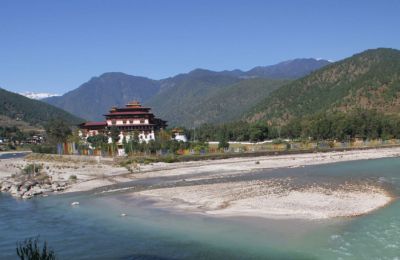
Bhutan Cultural Tour - 5 days
Bhutan Cultural Tour of 5 days lets you discover the rich Bhutanese culture. Visit ancient fortresses and Taktsang Monastery. Enjoy traditional hot stone bath.
Inquire Now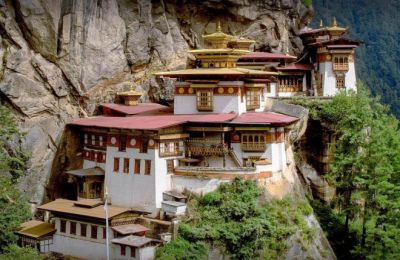
Nepal and Bhutan Tour - 9 days
Experience the beauty and culture of Nepal and Bhutan with our exclusive tour package for 2024/2025. Book now and create unforgettable memories!
Inquire Now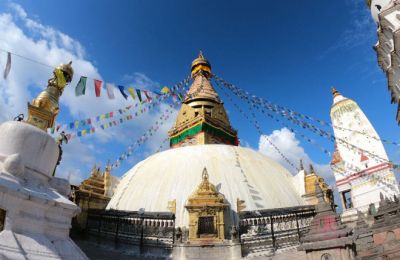
Incredible Nepal Bhutan Tour - 10 days
Nepal Bhutan Tour 10 days give you an opportunity to explore two countries rich in culture and natural beauty alike. Enrich your travel experience by touring two Himalayan countries together.
Inquire NowWhere to travel next?
Get help from our travel specialists for holiday ideas that matches your interests.
Photography Spot And View Points Along The Way?
While Thimphu and Punakha are popular for majestic dzongs, Paro is recognized for architecture and monuments. Such art and design are awe-inspiring to the eyes and valuable to the photographs. Those who can make the trek to Paro Taktsang will capture its beauty live and for the rest, photographs will do similar magic.
Most of the monastery complex technically faces due west. To capture the perfect lighting shot of the monastery, hike during the afternoon after 11:00 am when the temple emerges into the light. Since photography inside the temple is strictly forbidden, the best photography spots are outside the temple, of the temple. You are not allowed to carry any kind of bags or cameras and phones.
There are several vantage spots throughout the trail. If you take the short-cut trail, there are few extra points with fewer crowds. Taking this route also saves you from the threat of running horses. The way to Tiger's Nest is full of shady rest spots. While taking a break for a rest, you can take photographs from different angles. There is a beautiful point in the trail near the monastery which is perfect for capturing pictures.
Equipment like a tripod can be useful in lower lighting. It is better to avoid a lot of photography equipment as it might make the trek tiresome. The views of the mountains and sky from the temple look magical. After a tiresome trek, the vistas make it all worth it. Make sure you take plenty of pictures because it is the only way to recall your memory to Taktsang monastery.
What Can I Expect When I Reach Tiger's Nest?
Bhutan - a paradise of a traveler has Paro Taktsang which is a paradise of every trekker. Tiger's Nest is not an ordinary hike or an ordinary pilgrimage site. It is a challenging hike in Bhutan. But you can find local women making the same trek wearing complicated sari and sandals who are not there for a trekking experience but a religious purpose.
You can expect a diversity of people who come to the place. From religious visitors to extreme trekkers, it is a junction of diverse people. The magical shrine will give you a jaw-dropping reaction. You will be astonished to find out how new it looks despite being constructed many centuries ago. Besides the diversity of people, you can expect fluctuating weather, a peaceful environment, and outstanding views.
What Should I Bring Into Tiger's Nest?
- Bring a water bottle to refill it with water to keep you hydrated.
- Carry a jacket or a shawl in case you feel cold.
- Carry some energy bars or other snacks to help you with the hiking.
- Carry a trekking pole or hiking stick that will support your walk.
- It is better to have a raincoat or umbrella, and a bag cover (in case you have a bag) with you as the place receives plenty of rain.
DID YOU KNOW?
Tiger's Monastery has a local name 'Paro Taktsang' which means the Tiger's Nest of Paro in Dzongkha. Believed as one of the thirteen small monasteries where Guru Padmasambhava, recognized as the Second Buddha, founder of Buddhism in Bhutan, meditated for three years, three months, three days, and three hours, Taktsang was founded in Paro during the late 1600s.
How To Get To Tiger's Nest Monastery
You can reach the base camp of Paro by taxi or a private vehicle which can take around 35 minutes from the lower Paro and 20 minutes from the upper Paro. The hike begins from the parking lot that will take you to the Tiger's Nest after 2 to 3 hours of hike. If one cannot hike, one can hire a rental horse to reach the temple.
View From Monastery
Taktsang Phalung Monastery is famous for the majestic view of the mountains and emerald green valleys. The vista of the mountains and the sky from the monastery are unexplainable. With the natural breeze of cool air, the view is perfect.
Beginning The Tiger's Nest Hike
The Tiger's Nest hike begins from the parking lot at the base of the mountain in Paro. The vehicles come up to here and beyond this, no vehicle runs on the trail. If one cannot make the hike, one can ride on a rental horse up to the monastery.
Getting Into Tiger's Nest Monastery
Though the trek to Taktsang can be a little tiresome physically, it is overwhelming spiritually. After a short trek of few hours, you will reach the monastery whose sight will soothe your hardship. Stepping inside the temple will give you a jaw-dropping moment. You will be astonished by the interiors: statue, painting, art, and architecture.
Tiger's Nest Hike With Family And Kids
The trail is a slow and steady climb so even the kids can make it to the top with ease if they rest in resting spots throughout the trail. The kids will enjoy spinning the prayer wheels in the hallway after reaching half of the trail. The monastery complex is a perfect holiday destination for the family as it has a religious purpose along with refreshment.
When To Visit The Tiger's Nest?
The best time to visit the Tiger's Nest, Bhutan is in spring (March-May) and autumn (September to November). Though the temple is colorful and crowded throughout the year, the hills between March and May come alive with spectacular blooms. The autumn season in Bhutan has sunny weather with snow in higher elevations. In both seasons, the temperature is moderate with a clear sky, which makes the trekking a comfortable one.
Tiger's Nest In Different Seasons
Summer
The average temperature of the place reaches from 15°C to 20°C. Summer has a moderate temperature with the cool and natural breeze. The sky is clear and beautiful.
Monsoon
Bhutan's monsoon month begins in July and lasts till September. The monsoon brings heavy rain and humidity. It can add disappointment to your trip. Plan the trip from September to avoid heavy rainfall. Light and frequent rainfall can occur any month of the year.
Winter
The temperature can drop to as low as -9°C in winter. The place will receive fog and snow during winter. Even the route to the monastery becomes slippery during this season. But November is still one of the perfect months to visit the temple as the temperature is moderate and the sky is clear.
Autumn
Autumn begins in September and lasts till November. During this season, the weather is genial and affable. It is the perfect season to visit Paro Taktsang. If you plan your trek to Paro during this season, you can witness grand festivals like Paro and Punakha Tshechu.
Recommended Read: Best time to Visit Bhutan - Weather And Seasons
Featured Trips
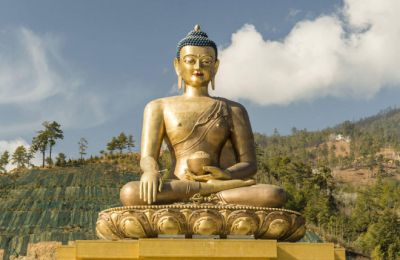
Bhutan Heritage Tour - 8 days
Bhutan Heritage Tour lets you explore centuries-old dzongs and Lakhangs built by Bhutanese kings and spiritual leaders. Take this Bhutan Heritage Tour and journey across the cultural hotspots of Bhutan, a fascinating Himalayan kingdom.
Inquire Now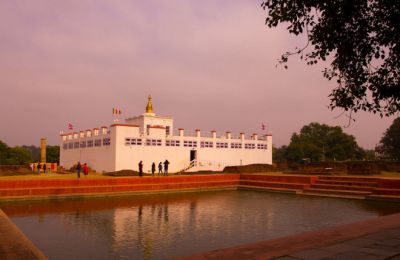
Nepal and Bhutan Buddhist Pilgrimage Tour - 12 days
Bhutan Buddhist Tour from Kathmandu-12 days is a sacred Buddhist Pilgrimage Tour to Nepal and Bhutan. Visit Lumbini, Lord Buddha’s birthplace and Tiger’s Nest.
Inquire Now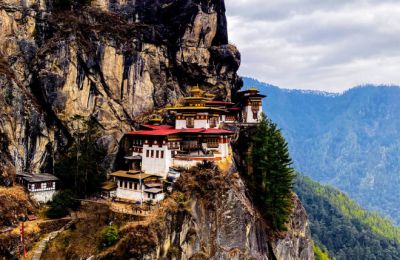
Glimpse of Bhutan Tour - 4 days
Perfect opportunity to taste the charm of the glorious nation and culture of Bhutan. 4 Days the Glimpse of Bhutan Tour is absolutely the right one for those who are short of time but do not want to miss the stunning realm of the Last Himalayan Kingdom, Bhutan
Inquire NowWhere to travel next?
Get help from our travel specialists for holiday ideas that matches your interests.
Travelers Tips To Tiger’s Nest Monastery
- Though the weather in Paro and above the valley up to the Tiger's Nest is cold, the trekking can be tiresome, so wear light clothes inside a jacket or a layer that can be removed later.
- Keep your equipment and accessories safely in a small locker. Make sure the phones and cameras are kept safe as they are not allowed inside the monastery.
- Carry a water bottle to keep you hydrated throughout the hike.
- Leave your shoes or slippers outside the temple as a rule of the temple. It is one of the ways to show respect to the place.
- For capturing the perfect shot of the monastery, take the picture after 11:00 am when the temple emerges out of the sun rays.
Places To Stay Near Tiger's Nest Monastery
Out of the several outstanding hotels and resorts near and around Paro Taktsang, the closest with the best views are listed below:-
Please mention these hotels. You will find the info from their website.
- Tashi Namgay Resort | http://www.tashinamgayresort.com/
- Khangkhu Resort | https://khangkhuresort.com/
- Hotel Gangtey Palace | https://www.gangteypalace.com/
Places To Eat In Or Near Tiger’s Nest Monastery
Taktsang Cafeteria
Located at the trekking trail to Paro Taktsang, the Taktsang cafeteria provides you with varieties of food that have good reviews in terms of hygiene and deliciousness. It is one of the resting places on the trekking route where travelers enjoy food and drinks while taking a break.
Champaca Cafe
Champaca cafe's unique feature is vegan-friendly and vegetarian food. The varieties available here are Asian cuisine, contemporary food, and coffee. The food here tastes yummy and the service is good too.
Park 76 Cafe and Club
Park 76 Cafe and Club offers different varieties of food from Asian Cuisine to alcoholic beverages. It serves a diverse variety of food and the place has a perfect arrangement for live music and dance. It is perfect for relaxation and a good time.
Mountain Cafe
Mountain Cafe serves a different variety of fast food from pizza to beverages. The food can be gluten-free, vegan, and vegetarian depending upon the choice of the customer. It receives plenty of customers because of the delicious food and good service.
What Not To Miss At Tiger’s Nest Monastery?
Paro Airport
Bird’s Eye Viewpoint: Paro International Airport is the sole international airport of Bhutan. The Bird's Eye viewpoint is situated near the airport which offers an excellent view of the entire city.
Chele La Pass
Chele La Pass is covered with dull forests which have diverse species of flora and fauna. The road to Chele La Pass is a pitch with motor access. Located between Paro and Haa Valley, Chele La Pass has to offer you some outstanding views of the panoramic mountains like Mount Jomolhari which is one of the sacred mountains located at an altitude of 22,000 feet.
Rinpung Dzong
Another magnificent monastery with a spiritual environment is Rinpung Dzong. This holy fortress is recognized for its extraordinary beauty and mind-blowing illustrations of Buddha. Its opening time is between 9:00 am to 5:00 pm.
National Museum of Bhutan
The National Museum of Bhutan lets you admire the historical paintings, masterpieces, and statues. Some of the paintings are drawn using scientific lines while others have an abstract flow of paints. The rich and creative art gallery of the museum takes you from old art designs to modern art designs. The museum's opening hours are 9:00 am to 5:00 pm.
Drukgyal Dzong
Drukgyal Dzong is situated on a ridge in the upper Paro Valley. It is one of those architectures in Bhutan that is recognized for its uniqueness and beauty. Embracing Utse, Drukgyal Dzong is surrounded by secret tunnels that fetch water from the river and Shabkhor which are rectangular buildings.
Tachogang Lhakhang Bridge
Tachogang Lhakhang Bridge is the iron chain bridge that crosses the Paro Chu to the Dzong. Recognize as the first bridge of Bhutan, it is made up of wood and iron combined.
Dungtse Lhakhang
The Dungtse Lhakhang is an example of excellent architecture. Rich in history and art, the place provides knowledge of Buddhism. It is located between Dopshari Valley and Paro. The shrine is full of Buddhist paintings which have significant meaning.
Druk Choeding
Druk Chording is one of the remarkable monasteries in Paro that has a statue of Jampa - the future Buddha in seated form. One of the creations of the 16th century, the monastery offers a pleasant vibe along with a magnificent view of the city.
Paro Chhu
Paro Chhu is a marvelous place to spend some quality time in nature. The word'Chhu' means the river. The river through the Paro Taktsang and Paro Dzong has a fascinating view that glows with the rays of sun over it.
Dzongdrakha Goemba
Dzongdrakha Goemba lies above the Bondey village, west of Paro valley. It is also known as Mini Taktsang. Comprising of four major shrines: Drolma, Guru Rinpoche, Maitreya, and Tsheringma, it fascinates the travelers with its outstanding beauty.
Recommended Read: Places To Visit In Bhutan - Most Popular Holiday Destinations
Frequently Asked Questions (FAQs)
1. How difficult is the Taktsang (Tiger's Nest) hike?
The Taktsang hike is an easy one for regular trekkers. For new trekkers, the trail is moderately difficult.
2. How long does it take to climb Tiger's Nest?
For an average climber, it takes 2 to 3 hours to climb to the Tiger's Nest.
3. How did Paro Taktsang Monastery get its name?
Paro Taktsang or the Tiger's Nest got its name from Guru Padmasambhava who is believed to have entered the monastery, which was a cave initially, by flying on a tigress.
4. Can I hire a horse on this hike?
The hike up the Paro Taktsang starts from a mountain's base. Filled with rocks, gravel, and sand, not every person can climb up to the monastery. Those who cannot take the trail on foot ride the horse that takes the person to the top. You can hire the horse at the parking lot from where the hike begins. Read more: 20 Top Frequently Asked Questions (FAQs) about Bhutan
Picking The Best Tour Operator For Your Trip
If you go on Tiger's Nest hiking with a guide, you do not have to worry about routes, lodges, restaurants, and other services. Third Rock Adventures provide you with an experienced tour guide with a friendly nature who will not let you stress about the tour.
Conclusion
Overall, Tiger's Nest is a perfect destination in Bhutan for wanderers, families, and Buddhist pilgrims who are seeking peace, adventure, and a lifetime experience. If you are looking for professional advice or guidance, feel free to contact us. If you have any questions, suggestions, or feedback about the Tiger’s Nest hike, let us know through the comment section below. We would be delighted to know about your experience and happy to help you with the answers.
Recommended Blogs
Nepal And Bhutan- Which Is The Better For Tourists?
Airports in Bhutan - 4 Places That Connect The Country To The World
25 Festivals in Bhutan - A Complete Guide to Bhutan Festivals
Bhutan Festivals Calendar (2022 Updated)
Best time to Visit Bhutan - Weather And Seasons
Places to Visit in Bhutan - Most Popular Holiday Destinations in the Himalayan region
- Written by: Naba Raj Amgai
Updated: Feb, 25, 2021

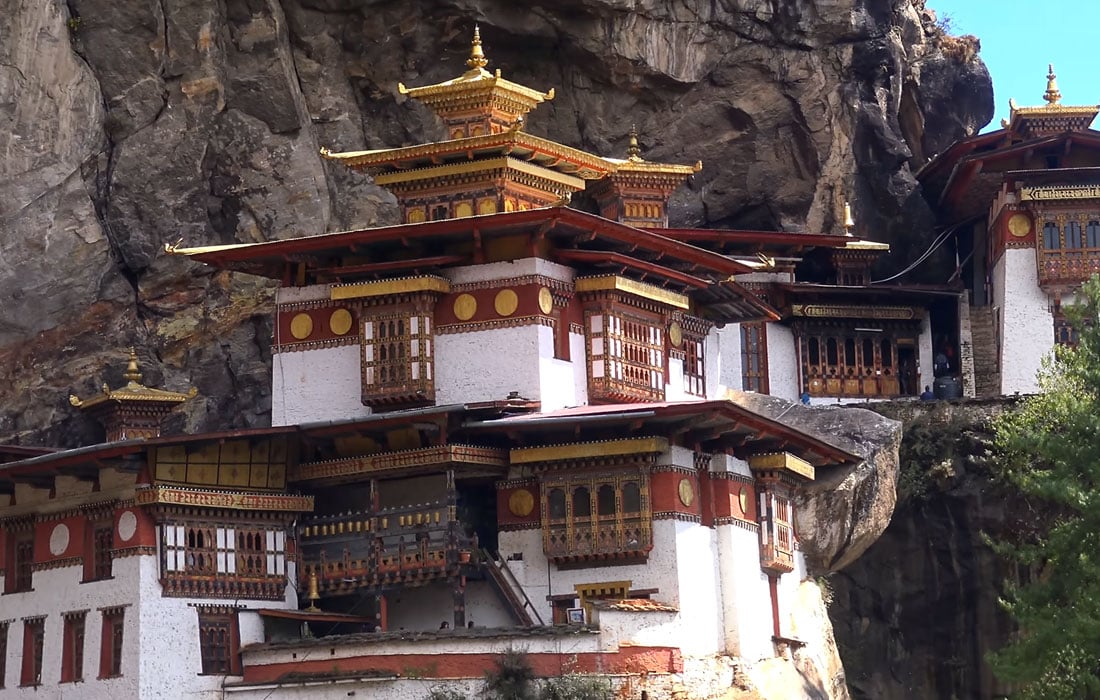






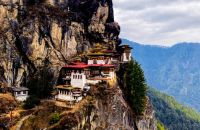
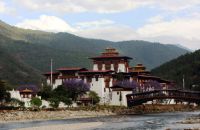
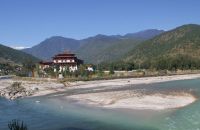

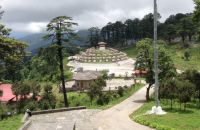
















Recent Comments